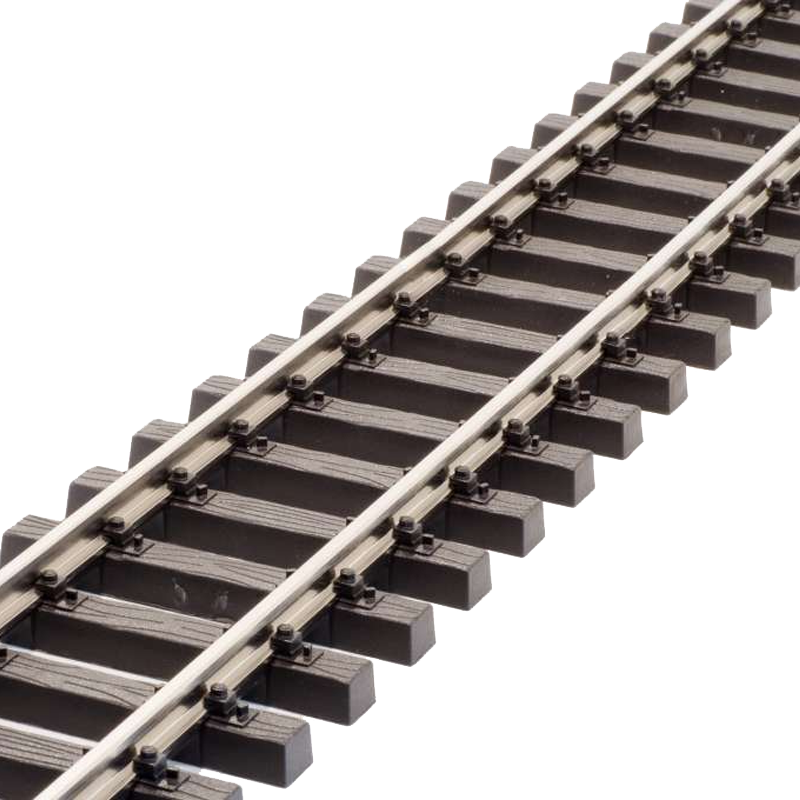

$795.00
ProLine™ NpB G-scale Flextrack - the perfect choice for your powered LGB layout
100% LGB, Piko, Aristocraft, Accucraft, AMS compatible
6' (1800mm) straight track (with NpB G-scale rail) in a box of 10 pcs. For a total of 60'. This G-scale track works best with our legendary ProClamps. We recommend the purchase of 20 clamps per box of flextrack.
NpB* rail is the 100% guarantee of oxidation free rail, while still guaranteeing the best conductivity that brass offers. Unlike Stainless Steel that can corrode and has only 1/10 of the conductivity NpB rail is the optimal choice for garden railroaders that enjoy the benefits of track power (Analog or DCC).
*NpB rail stand for Nickel plated Brass and has a durable Nickel layer that is long lasting.
Type: G-scale Track
Compatible: LGB Track; Aristo Track; Bachmann Track, Piko Track, AML Track
More information about our G-scale track:
All our G-scale LGB compatible track and switches are exclusively Made in Germany. We have two types of rail that is used for our products:
The most commonly used material is Brass. A very good conductor for power, but oxidation (more in certain climates than in others) requires cleaning before you can “play” with the layout (Scotch Pad on a stick, track cleaning block, track cleaning loco, track cleaning car with cleaning pads - powered options while more expensive are more convenient). A oxidation free approach is NpB rail (not to be mixed up with Nickel Silver). While about 20% more expensive it offers the excellent conductivity of Brass coupled with the anti oxidation protection of stainless steel. There is no oxidation cleaning to be done and you basically may need to clean the surface every two to three month (enviromental deposits), which you can avoid by running a box car with a soft pad with your trains.
Often stainless steel track is mentioned, but stainless steel has only 10% of the conductivity of Brass and secondly switches based on stainless steel are much less precise than their brass counter parts, due to the material hardness and the lack of of intensive tool work that would be required for good machined stainless steel switches. This problem is completely avoided with NpB.
When it comes to Brass you have to be careful about the material choices. Cheaper brass (mostly from China) is softer and hence wares quickly (one Christmas layout in San Francisco had to be re-done already after 2 weeks of operation).
Code 332, 250, 215—what is the story?
As for the code if you follow NMRA they recommend a minimum of code 250 (= .0250 height). While the purist say code 250 (or even code 215), consider that code 332 is only 0.082" of an inch higher then code 250. I found that you have more product options when it comes to code 332 and when you are outdoors the overall sturdiness of 332 (e.g. when accidentally stepped on the track) is definitely an advantage. And while code 250 might clear all the flanges, but as soon as crusher fines come into play you might have lost that clearing (especially outdoors) where the elements always mess with your layout. Indoors you can try code 250 because the two risk factors are gone. Another point is that code 250 is not a standard across all manufacturers. The rail foots and rail heads differ between the various manufacturers and hence you maybe bound to use one single manufacturer because you can’t mix and match easily. We know of one product whose rail head is identical to code 332 (so you actually need to bend that with a 332 bender versus 250 bender). In those cases the “slimmer” looks of code 250 has been almost eliminated because they didn’t shrink the rail proportionally by 25% so you end up with less height but similar width which we call the Garfield look (“he is not chubby he is just under-tall”). Additionally modern prototypical rail to scale would be actually leading to code 300. Therefore the modern rail environment is much better served by code 332 then code 250. Additionally with a height difference of 0.082 you can hardly see a difference at 5’ distance and for me (and I am a rivet counter) the disadvantages outweigh the looks.
European or American ties?
This question is actually a misnomer. There is for the most part no such thing as European or American ties. The separation is different - standard gauge or narrow gauge. American and European narrow gauge railroads used very similar ties as they are reflected in our standard (LGB compatible) ties with 11 ties per foot. Standard gauge railroad ties are represented with thinner ties and 14 ties per foot. Keep this in mind when you order.
More important is actually the tie-strip quality. You need to watch for sturdy rail chairs, otherwise they snap. The rail chairs should also have no side to side “slip” because that may fluctuate your rail gauge (width) and cause operation problems.
Please wait! Content loading.....
